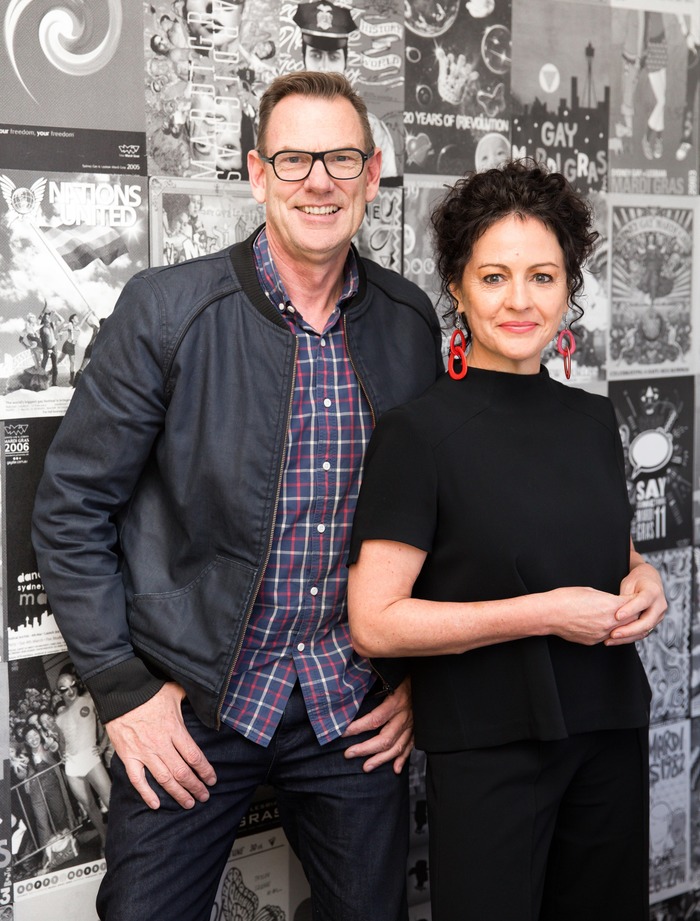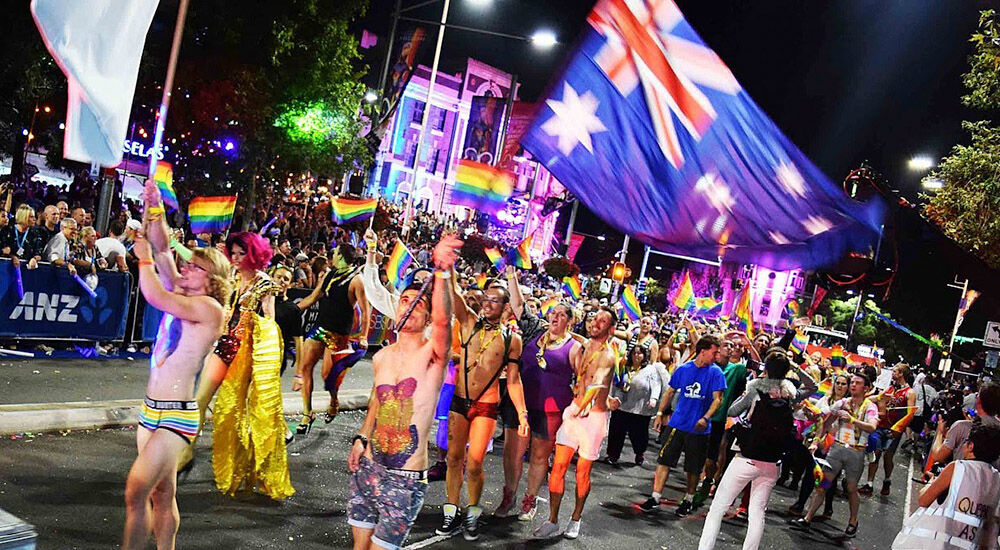Putting on the world’s biggest nighttime outdoor parade, full of glitter, drag queens, and flamboyance sounds like the most fun job in the entire universe.

But for Terese Casu, who has been CEO of Sydney Gay and Lesbian Mardi Gras for the past two and a half years, the job holds unique challenges.
Terrorism mitigation is named as a top priority, the sad reality of any event this large in 2018. She has also had to carefully tread the divergent paths between politics/campaigning and celebration/party; community and commercial sustainability and trying to keep everyone happy – with feet in all paths on the pink brick road that is the world’s leading Mardi Gras.
To say she has done so with aplomb is an understatement. Where the finances of Mardi Gras were once so dire, it was almost brought to its knees and canceled (in 2002 the organizing company officially went bankrupt) – now the coffers are in “terrific shape” – they’ve been able to grow as well as build reserves.
Such commercialism hasn’t been at the expense of the community feel of the event, either. Instead of overlooking that, Casu has deeply integrated it, so the event’s history is captured and respected – in addition to a vision for the future.
The flagship event of this 40th anniversary year is the temporary “Museum of Love and Protest” – putting the history of Mardi Gras and its roots at the heart of the packed, month-long schedule, and providing space for sober reflection and gratitude amongst the celebrations.

Casu tells me: “Business sustainability is crucial, but this is about people’s lives – we cannot lose sight of that. Some have dedicated their entire lives to social justice, and we need to reflect what they fundamentally believe in – justice and equality. I’m proudest of providing a platform for smaller LGBTQ organizations.”
When I speak to “78er,” Kate Rowe – one of the founders of Mardi Gras in response to police brutality against gay people in 1978 – she tells me that relations haven’t always been great between the Mardi Gras committee and its founding members, but under Casu, this has changed. The relationship is enjoying a high point – a creative working group of 78ers gives the founders – who’ll be leading this year’s parade – a voice and recognition.
Casu is conscious of recognizing everyone for the 40th anniversary: “I’m trying to honor all the eras from 1978 to 2018 – from the AIDS era in the 80s to the 90s, when we put our hands back into the air to today, where we’re struggling to keep up with the rapid changes in the LGBTQ environment.” Ensuring quieter voices get heard is important to her: “What about the 79ers? And those in the 80s who worked so hard and dedicated their lives to this community.” The next step, she says, is to “ensure marriage equality doesn’t overshadow our trans and intersex community. The most dangerous thing now would be to become complacent.”
That first parade – which Casu says had 200-300 participants – has grown to 12,300 participants in this year’s parade, with half a million spectators along the route and over a million TV viewers.
The $64,000 question is: how did they bag Cher, the mother of all gay icons? “The stars aligned,” she says laughing triumphantly. “It’s our 40th, the first Mardi Gras since marriage equality – and she was in between tours. We’re so lucky!”

She puts to bed once and for all the rumors circulating that Kylie will also perform – but remains tight-lipped on the gossip about the “surprises” along the route – including at Taylor Square, the epicenter of Sydney’s gay village: “At the beginning of the parade there’s going to be a treat and another halfway through at Taylor Square. We’ll be recreating vignettes of our 40-year history.”
So no Kylie, then, but at the time of writing, her edgier sister Dannii Minogue has just confirmed she’ll be on the Netflix float with US stars such as Looking’s Jonathan Groff and cast members of Orange is the New Black and Sydney’s most popular drag queens, including Sheileta Buffét and Coco Jumbo.
What does Casu’s job look like after she has dusted off the glitter? The Museum of Love and Protest will be touring regional Australia along with their “Queer Thinking” program, which includes guest speakers on subjects from feminism to LGBTQ refugees.
Isn’t it time for a permanent, physical LGBTQ museum in Australia, I ask her? She enlivens at the idea: “This is the time. We’ve started that discussion. We cannot pack that history back into a dusty box. It’s such important history. We’re so behind the world with archiving our LGBTQ history.”
And with that, she dashes off to create some important history of her own with Sydney’s biggest party since the 2000 Olympics now just hours away.
Don't forget to share:
Help make sure LGBTQ+ stories are being told...
We can't rely on mainstream media to tell our stories. That's why we don't lock our articles behind a paywall. Will you support our mission with a contribution today?
Cancel anytime · Proudly LGBTQ+ owned and operated
Read More in Culture
The Latest on INTO
Subscribe to get a twice-weekly dose of queer news, updates, and insights from the INTO team.
in Your Inbox













